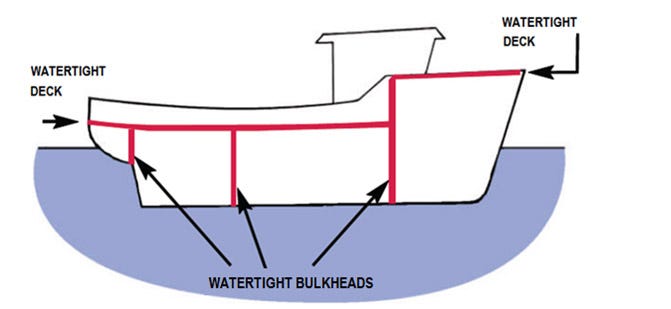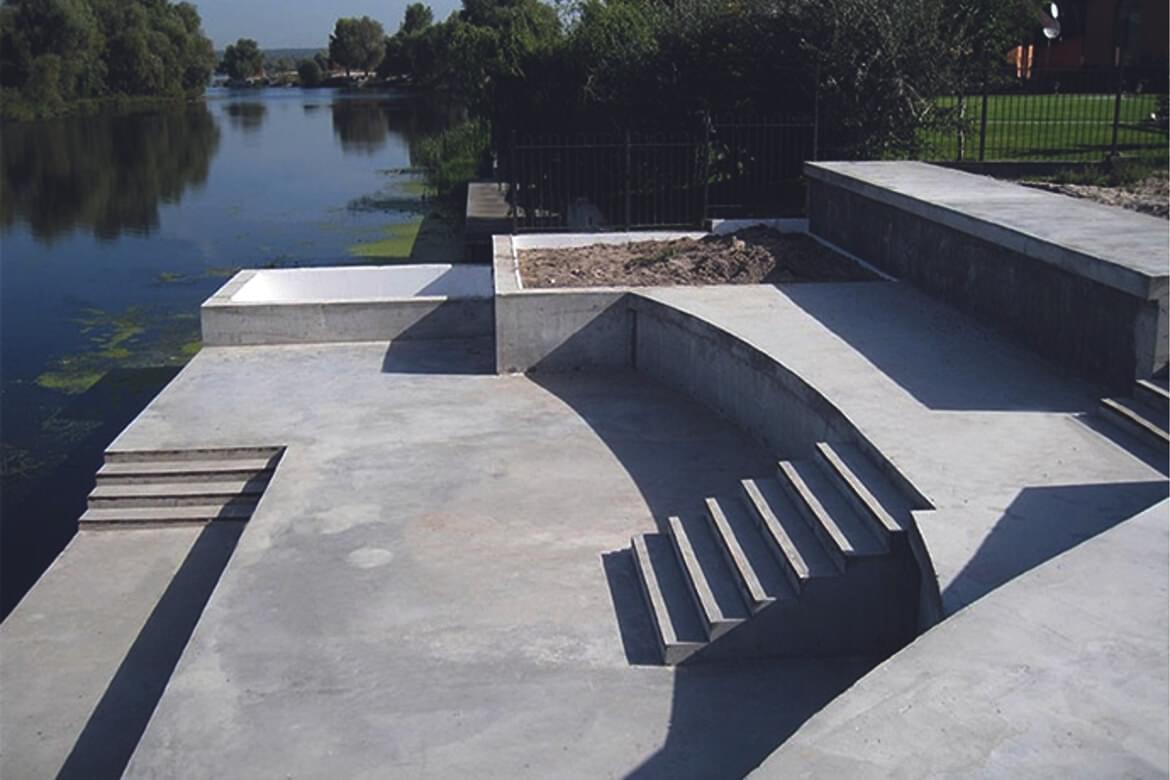Exploring the Everyday Roles of Bulkhead on Lake Livingston in Housing Projects
Exploring the Various Usages of Bulkhead Structures in Modern Style
Bulkhead frameworks play a significant role in modern style, offering both practical and visual purposes. They can specify rooms, enhance storage services, and improve lights. In industrial settings, they function as focal points that reflect brand identification - Bulkhead on Lake Livingston. Additionally, their integration frequently sustains audio management and sustainable techniques. Comprehending the full scope of their applications reveals much concerning modern style trends and user experience. What ingenious uses bulkheads might arise in the future?
Defining Bulkhead Frameworks
Bulkhead frameworks play a vital function in modern-day architecture, functioning as vital components in numerous structure designs. These frameworks are generally specified as elevated systems or ceilings, typically made use of to conceal mechanical systems, wiring, or pipes. Bulkheads can be discovered in both domestic and industrial setups, where they supply a seamless mix of functionality and appearances. Their layout can incorporate lights components and various other attractive components, improving the overall aesthetic appeal of a space.
Normally created from materials such as drywall, steel, or wood, bulkheads can be personalized to fit the architectural design and demands of the building (Bulkhead on Lake Livingston). They serve not just to conceal unattractive infrastructure but also to create specified areas within open rooms. By handling the flow of an area, bulkheads contribute to the spatial company, making them a considerable element of contemporary building method. Their definition encapsulates both aesthetic and useful measurements.
Functional Applications in Residential Design
Bulkhead frameworks play an important function in domestic layout by assisting in space optimization strategies that make the most of functional areas. They contribute visual design aspects that enhance the visual allure of living rooms. Additionally, these structures offer essential structural support services, making sure the honesty and security of the home.
Area Optimization Approaches
As modern residential designs increasingly prioritize efficient use space, ingenious techniques emerge to make the most of functionality without compromising appearances. One prominent approach involves the combination of bulkhead frameworks, which can mark locations while giving necessary storage options. These structures can be used to produce upright storage units that enhance both company and access. In addition, multi-functional furniture, such as collapsible tables and exchangeable couches, enhances bulkhead styles, allowing rooms to adjust to varying needs. Open layout even more maximize spatial flow, urging flexibility in operation. Incorporating integrated shelving and recessed lights within bulkheads likewise adds to a streamlined environment, making certain that every inch of space is used successfully and harmoniously within the general style.
Visual Style Aspects

Architectural Assistance Solutions
In modern household design, an efficient structural support option is vital for preserving the honesty of rooms while optimizing design and functionality. Bulkhead frameworks play a considerable role in this scenario, acting as both assistance and dividing components. They can conceal mechanical systems, such as pipes and electric wiring, while giving support to the ceiling and flooring systems. By strategically positioning bulkheads, engineers can develop defined areas within open floor strategies, improving functionality without compromising architectural security. Furthermore, these structures can accommodate lights fixtures, adding to both looks and usefulness. To sum up, bulkhead frameworks are important in residential layout, providing functional assistance remedies that enhance both the capability and aesthetic appeal of living spaces.
Enhancing Looks in Industrial Spaces
When industrial spaces welcome innovative bulkhead structures, they not just specify physical limits but additionally considerably enhance the total looks of the environment. These building elements function as aesthetic centerpieces, drawing focus and developing a feeling of intrigue. By integrating varied materials such as steel, glass, or timber, bulkheads can show a brand's identity and mission, adding to a cohesive design.
Additionally, the critical placement of bulkheads can control light and darkness, including depth and dimension to otherwise level spaces. This interplay can transform a business location right into an inviting environment, urging client involvement. Furthermore, making use of shade and appearance in bulkhead style can evoke particular emotions, improving the total client experience. Eventually, the thoughtful integration of bulkhead frameworks boosts the visual allure of business rooms, making them not just useful however likewise visually captivating, consequently promoting a lasting perception on visitors.
Acoustic Efficiency and Noise Administration
Reliable acoustic performance plays an essential function in contemporary design, especially within industrial areas where audio administration is crucial. Bulkhead frameworks can greatly enhance acoustic qualities by soaking up noise, reducing echo, and mitigating noise transfer between locations. These functions are particularly advantageous in environments such as cinemas, workplaces, and dining establishments, where clear communication and a pleasurable acoustic experience are paramount.
The critical positioning and layout of bulkheads can aid produce sound-buffer zones, successfully isolating loud areas from quieter ones. Products made use of in bulkhead construction, such as soft surfaces and acoustic panels, add to their sound-dampening capacities. In addition, the unification of bulkheads enables the combination of sound-absorbing elements without jeopardizing visual charm. By dealing with acoustic performance, designers can create harmonious environments that boost convenience, improve individual experience, and promote productivity, making bulkheads a crucial element in the layout of modern industrial rooms.
Integrating Bulkheads for Reliable Area Application
Typically neglected, the combination of bulkheads in architectural layout can significantly enhance room usage in contemporary buildings. These architectural components serve multiple useful functions, providing a way to conceal mechanical systems, electrical circuitry, and pipes without endangering aesthetic appeals. By tactically placing bulkheads, engineers can develop defined locations within open layout, thus facilitating much better organization and flow.
Bulkheads can include storage solutions and lights attributes, making best use of the functionality of or else thrown away upright room. In domestic setups, they might delineate areas such as cooking areas or living areas, while in industrial rooms, they can boost the effectiveness of layouts by clearly noting pathways and workspace.
Ultimately, the click here to find out more thoughtful assimilation of bulkheads contributes to a much more aesthetically attractive and organized setting, enabling versatile areas that can develop with the needs of their owners. This method not just optimizes room but likewise cultivates a more harmonious communication in between kind and function.
Bulkheads in Public Style

Architectural Visual Enhancements
While many building elements objective for capability, bulkheads in public architecture offer a twin purpose by enhancing aesthetic appeal. These frameworks usually develop visual rate of interest through their layout, integrating perfectly with bordering elements. By employing different products, appearances, and colors, bulkheads can add to an unique identity for public rooms, such as airports, galleries, and libraries. Their critical positioning helps to mark locations, leading site visitors while adding depth to the total design. Additionally, bulkheads can accentuate lights, producing dynamic environments that transform throughout the day. This visual improvement not only boosts the site visitor experience but also cultivates a local color, making bulkheads an important factor to consider in modern public design. Overall, bulkheads embody the blend of type and function.

Architectural Assistance Solutions
As architects look for cutting-edge means to improve the structural honesty of public areas, bulkheads become necessary components in the layout and construction procedure. These structures provide critical assistance, especially in areas subject to heavy foot web traffic or vibrant lots. By distributing weight equally, bulkheads assist stop architectural failing while enabling versatile design alternatives. In huge venues, such as stadiums and convention facilities, bulkheads are commonly integrated into the general building framework, ensuring security and safety and security. Additionally, they can help with the unification of energies and mechanical systems, adding to the effectiveness of room use. Ultimately, bulkheads represent an essential option in modern public design, reinforcing both capability and security visit in community-focused environments.
Environmental Management Actions
Integrating environmental management procedures into public architecture has actually ended up being increasingly vital as urban designers focus on sustainability together with structural assistance. Bulkhead frameworks serve a dual purpose in this respect, acting as obstacles versus disintegration and flooding while concurrently enhancing the visual allure of metropolitan landscapes. Their design commonly consists of natural environments such as plant life, which can improve air quality and offer environments for wild animals. In addition, bulkheads can be engineered with absorptive materials that allow for water absorption, lowering drainage and promoting groundwater recharge. This integration of eco-friendly considerations not just maintains the setting however likewise promotes community resilience against climate modification. By using bulkheads properly, designers contribute to lasting city advancement that straightens with modern environmental goals.
Future Fads in Bulkhead Style
Emerging patterns in bulkhead style reflect a growing emphasis on sustainability, technology, and functionality in modern-day style. Developers are increasingly integrating environmentally friendly products, such as recycled composites and bioplastics, to reduce environmental impact. On top of that, the assimilation of wise innovation is ending up being common, enabling bulkheads to offer multi-functional objectives, consisting of power storage space and environment control.
In urban settings, modular bulkhead systems are obtaining traction, using adaptability in style and simplicity of installation. These systems can be adjusted to numerous landscapes, enabling effective area utilization. In addition, visual factors to consider are advancing; bulkheads are now being designed to enhance aesthetic allure, usually incorporating imaginative elements that reverberate with local society.
As useful content climate resilience becomes a top priority, future bulkhead styles will likely prioritize flood protection and stormwater monitoring, guaranteeing structural honesty while dealing with environmental difficulties. This shift represents an alternative method to style that meets both eco-friendly obligations and human requirements.
Regularly Asked Questions
What Materials Are Frequently Utilized for Bulkhead Building And Construction?
Usual materials for bulkhead building consist of concrete, steel, timber, and composite products. These alternatives give resilience, structural stability, and resistance to ecological aspects, making them suitable for various applications in construction and design jobs.
Exactly How Do Bulkheads Influence Structure Energy Performance?
Bulkheads enhance developing energy efficiency by supplying thermal insulation and reducing air leakage (Bulkhead on Lake Livingston). They aid keep interior temperature levels, consequently reducing home heating and cooling down demands, ultimately leading to reduced energy prices and boosted ecological sustainability
Are There Any Building Regulations Details to Bulkhead Frameworks?
Yes, developing codes specific to bulkhead structures exist, varying by location. These regulations usually resolve security, architectural integrity, and ease of access, making sure that bulkheads meet called for criteria for construction and layout within a provided jurisdiction.
Can Bulkheads Be Easily Modified or Gotten Rid Of Later?
Bulkheads can commonly be modified or eliminated, depending on their style and building and construction. Such modifications may need mindful planning and adherence to building codes to guarantee architectural integrity and security are kept throughout the procedure.
What Are the Prices Connected With Mounting Bulkhead Frameworks?
The expenses related to mounting bulkhead structures can vary significantly, typically influenced by materials, layout complexity, and labor. Normally, costs vary from moderate to high, relying on the project's details demands and location.
Bulkhead frameworks play a critical function in modern architecture, offering as necessary parts in different building styles. Bulkhead frameworks play a vital function in property layout by facilitating room optimization approaches that make the most of useful areas. Frequently forgotten, the combination of bulkheads in building style can greatly enhance space usage in modern-day structures. As designers look for ingenious methods to enhance the architectural stability of public spaces, bulkheads arise as important parts in the style and building procedure. The costs associated with setting up bulkhead structures can differ considerably, usually influenced by products, style intricacy, and labor.